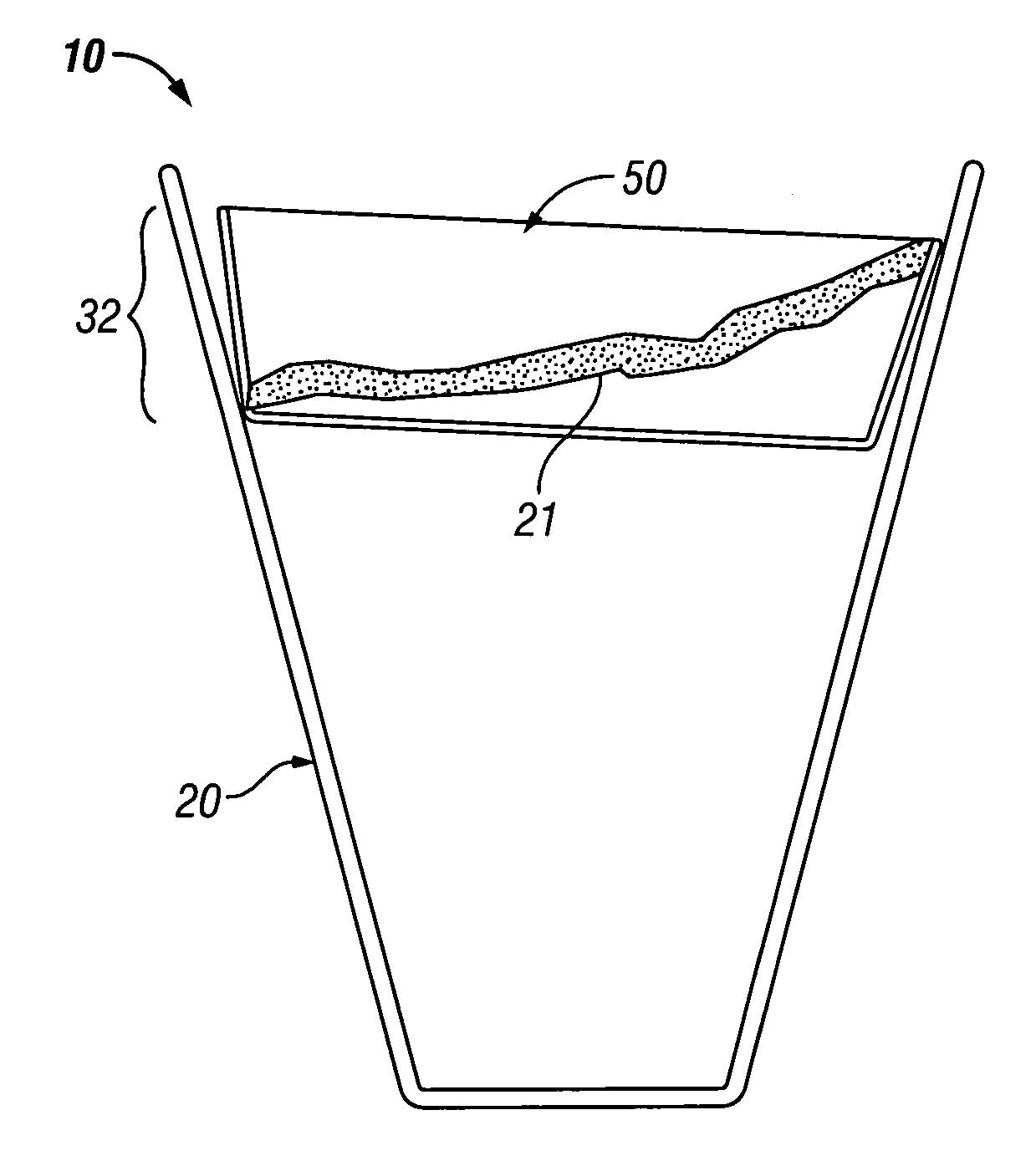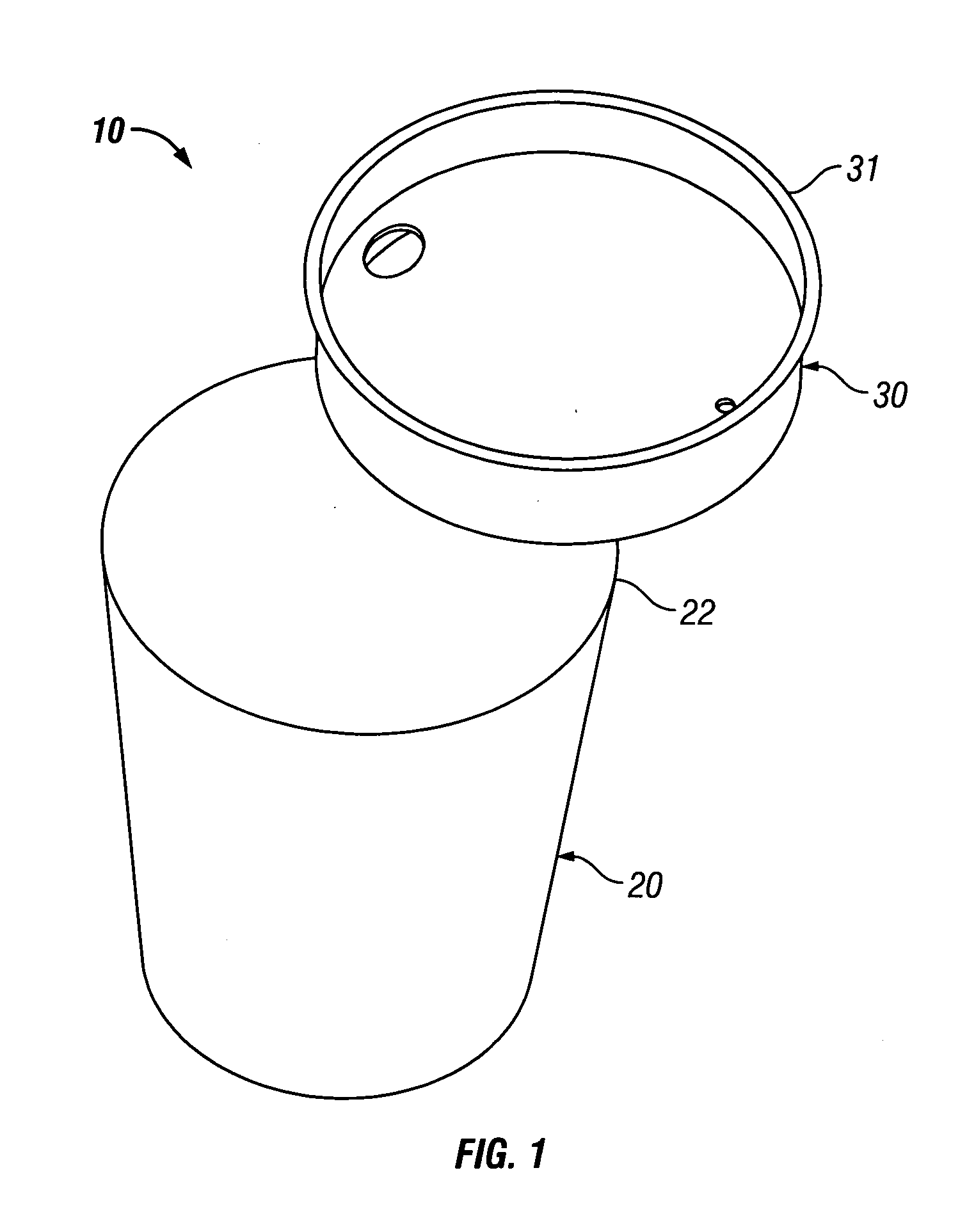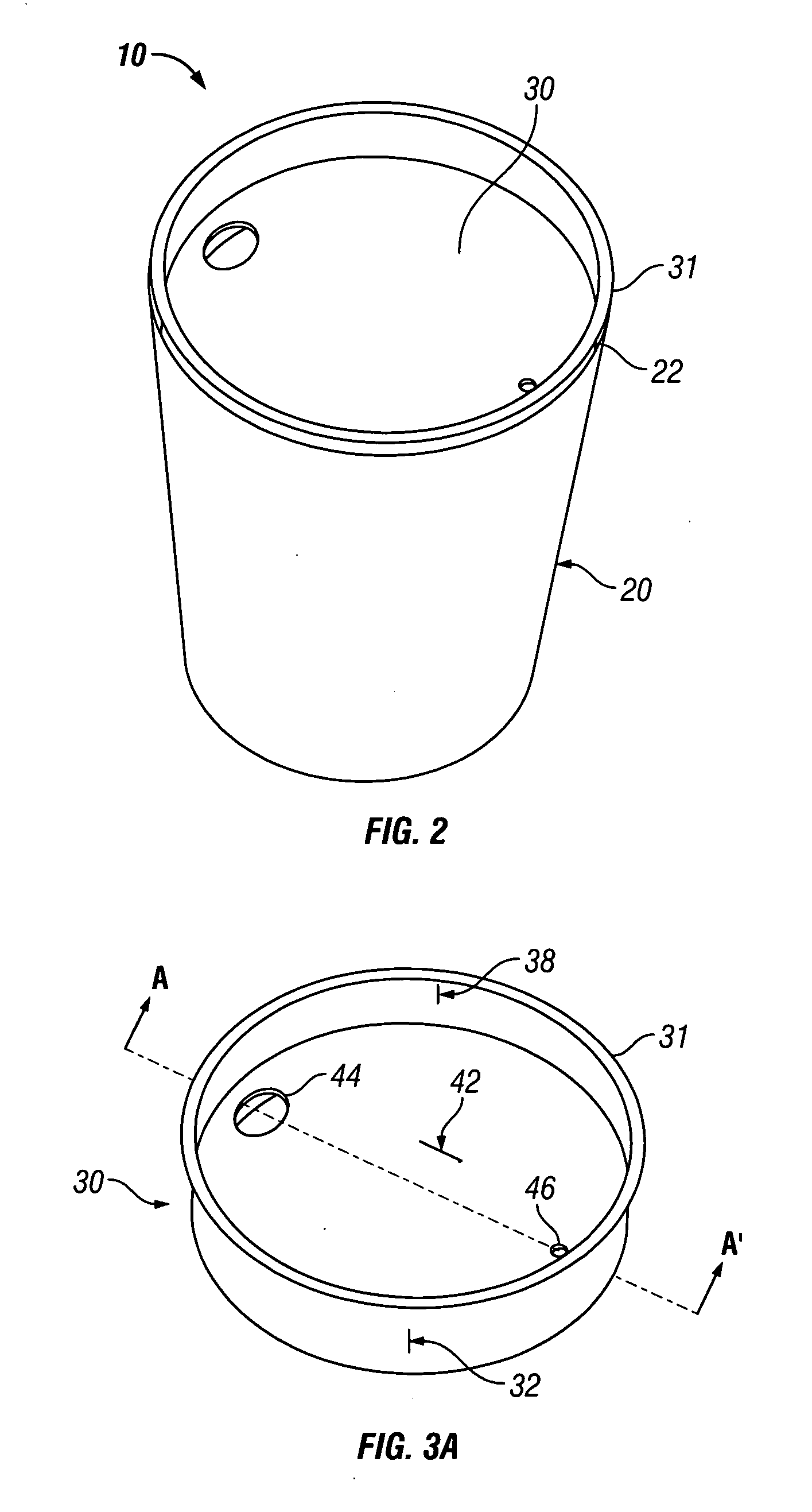Lid for cup
- Summary
- Abstract
- Description
- Claims
- Application Information
AI Technical Summary
Benefits of technology
Problems solved by technology
Method used
Image
Examples
Example
[0076]Reference is made to FIGS. 8 to 10 which show a container formed from a second embodiment of a cup 20′ and a lid 70. The cup 20′ has a construction of a type which is generally known in the art with a frustoconical, tapering outer annular wall 132 having a rolled top rim 22. As seen in FIG. 10, the outer annular wall 132 extends downwardly to a bottom base 136 where the material forming the wall bends upwardly as an inner annular wall 133 which extends upwardly inside the outer annular wall 132 to where the inner annular wall 133 merges with a bottom disc 141 closing the bottom of the cup as a surface 142.
[0077]The lid 70 shown in FIG. 10 has a construction analogous to the construction of the cup 20′. As seen the lid 70 is a frustoconical tapering annular outer wall 32 which carries a rolled top rim 34. The outer annular wall extends downwardly to the bottom base 36 where the material forming the outer annular wall is folded back upon itself and extends upwardly as an inner a...
PUM
 Login to View More
Login to View More Abstract
Description
Claims
Application Information
 Login to View More
Login to View More - R&D
- Intellectual Property
- Life Sciences
- Materials
- Tech Scout
- Unparalleled Data Quality
- Higher Quality Content
- 60% Fewer Hallucinations
Browse by: Latest US Patents, China's latest patents, Technical Efficacy Thesaurus, Application Domain, Technology Topic, Popular Technical Reports.
© 2025 PatSnap. All rights reserved.Legal|Privacy policy|Modern Slavery Act Transparency Statement|Sitemap|About US| Contact US: help@patsnap.com



